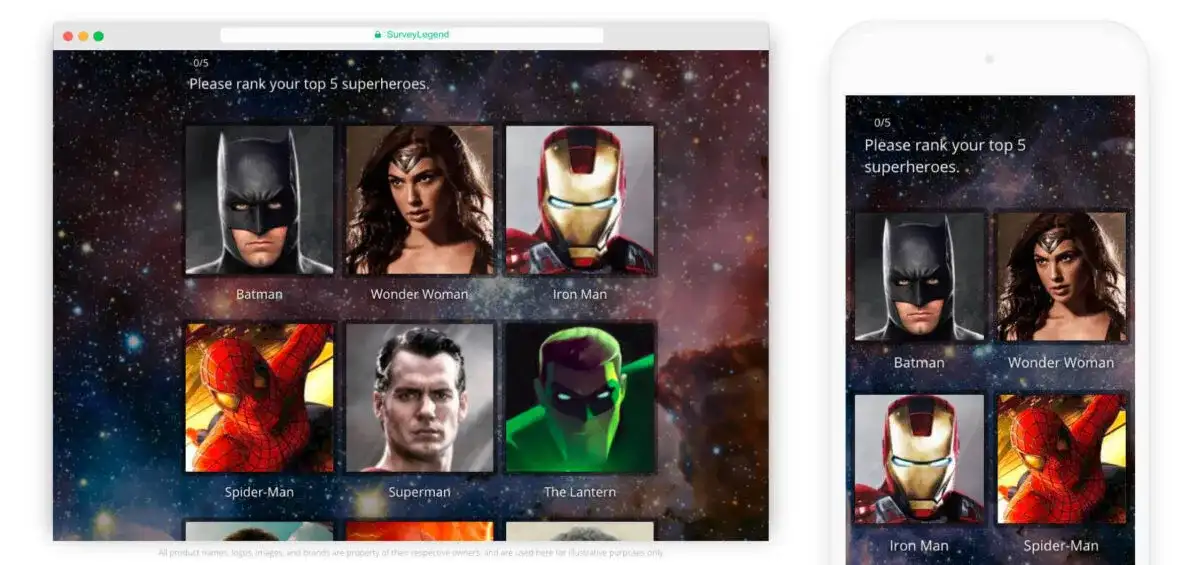SMART survey designs apply the principles of SMART goals—Specific, Measurable, Achievable, Relevant, and Time-based—to create focused, effective surveys that deliver actionable results. By defining clear objectives, setting measurable targets, and establishing realistic timelines, organizations can ensure that their surveys drive meaningful insights. Modern survey tools make it easy to design accessible, engaging, and data-driven questionnaires with advanced logic, analytics, and integration capabilities. SMART survey design helps businesses collect reliable feedback, improve engagement, and make informed, goal-oriented decisions. With the right platform, anyone can create surveys that inspire action and continuous improvement.
Creating a survey takes time and effort – if you expect to get results. There are many things to consider, such as the look and feel of the survey, the question wording and order, who you’ll send it to, and the best time to send it. So, to be sure you get the most bang for your buck (and your time), it’s a good idea to create a SMART survey, based on the concept of SMART goals. Using a survey platform as an all-in-one solution can help you efficiently design, manage, and analyze your SMART surveys.
Take time to explore the features and capabilities of your chosen survey platform to fully utilize SMART survey design.
Create your SMART survey, form, or poll now!
What Are SMART Goals?
SMART stands for Specific, Measurable, Achievable, Relevant, and Time-based. Each component of the SMART framework works together to accomplish a goal that is well thought out, clear to everyone involved, and trackable when it comes to analyzing results. It’s not uncommon for companies to set goals that are difficult to achieve because they are too vague, too aggressive, or just poorly framed. Trying to reach these goals, then, becomes very frustrating. However, by using SMART goals, a framework for success can be reached.
Components of SMART Goals
Let’s dive a little deeper into the acronym itself and look at what each word that makes up the SMART acronym really means.
Create your SMART survey, form, or poll now!
S: Specific
Goals need to be as clear as possible. Broad goals are likely to be too lofty, so it’s important to narrow them down as much as possible. The narrower they become, the more you’ll come to understand the path to achieving them.
M: Measurable
You need to be able to measure your goal to understand your progress. Rather than one ultimate goal, you may also want to set milestones along the way to allow you to evaluate how you’re doing and make course corrections if necessary.
A: Achievable
Goals need to be achievable; otherwise, they simply set you up for failure. So, make sure your goal is challenging but reasonable in order to stay focused and motivated. Before you begin working toward a goal, decide whether it’s something you can accomplish or whether other steps need to be taken first to get there.
R: Relevant
Goals need to be relevant, meaning they must align with your values and your bigger long-term goals. If a goal doesn’t add to your broader objectives, it may need to be revamped in order to make it worthwhile and get other team members on board.
T: Time-based
How long will it take to reach your goal? It could take longer than expected, or it may be achieved sooner than expected. Either way, it’s still important to set an end date to provide motivation and help you prioritize. If you run past the end date, consider why it has taken longer than anticipated or what roadblocks slowed you down. If you beat the end date, give yourself a pat on the back and make note of everything you did right so you can duplicate it in the future.
Create your SMART survey, form, or poll now!
What is a SMART Survey Design?
A SMART survey design is all about applying the SMART goal concept to your surveys and survey questions. Survey data is collected efficiently and reliably using standardized methods, ensuring accuracy and facilitating analysis. Integrations with other tools can enhance the survey process and data analysis. Additionally, you can upload, manage, or export survey data as a file for further analysis. The best way to see how this works is with some survey design best practices and examples.
SMART Survey Example 1
The goal: A company wants to better understand how customers feel about its new rebranding. Applying the SMART goal methodology, the plan may look as follows:
- Specific: To determine whether the new rebranding is a hit or a miss with customers, focusing on the link between branding elements and survey design to accurately capture customer perceptions.
- Measurable: Must get at least 500 surveys completed to gain a reasonable idea of people’s response to the rebranding. Assuming an industry average response rate for external respondents of 15%, about 3,000 surveys will need to be sent in order to measure results.
- Achievable: The goal can be achieved through online surveys. If not enough surveys are returned via email, pop-up surveys on the website can fill in the gaps.
- Relevant: Understanding how people feel about the new rebranding effort will allow the company to roll out national campaigns if the response is positive or rethink the effort if the response is negative.
- Time-based: Surveys must be completed by the end of quarter 2 so a national rebranding effort can begin in Q3 (or it can be halted if the response is negative).
SMART Survey Example 2
The goal: A school district wants to know how high school students feel about virtual learning after COVID-19. Applying the SMART goal methodology, the plan may look as follows:
- Specific: To understand whether students are open to virtual learning even after the pandemic.
- Measurable: Must get at least 1,000 surveys completed to gain a reasonable idea of high school students’ thoughts on virtual learning. Assuming an industry average response rate for internal respondents of 40%, 2,500 surveys will need to be sent to measure results.
- Achievable: The goal can be achieved through online surveys. If not enough surveys are returned via email, cafeteria and library kiosk surveys can capture more responses. Survey logic can also tailor follow-up questions based on students’ previous answers, making the survey more engaging and relevant.
- Relevant: Understanding how students feel about virtual learning will allow the district to determine whether online classes are a viable option in the future.
- Time-based: Surveys must be completed by the end of the school year so that virtual classes can be implemented or shelved by the following school year.
Create your SMART survey, form, or poll now!
Building Accessible and Engaging Surveys
Creating accessible and engaging surveys is essential for collecting reliable survey data and achieving high response rates. Today’s survey design software provides all the tools you need to quickly create great-looking surveys that are both inclusive and captivating for every respondent.
Accessible surveys start with clear, easy-to-understand survey questions. Advanced tools like sentiment analysis and text analysis help ensure your questions are straightforward and free from bias, making your surveys more approachable for a diverse audience. With features designed to support accessible surveys, you can be confident that as many people as possible can participate, regardless of their abilities or background.
Engaging surveys keep respondents interested from start to finish. By offering a range of question choices—including multiple choice, rating scales, and open-ended questions—you can create surveys that are interactive and enjoyable to complete. User-friendly survey software makes it simple for respondents to navigate and answer questions, reducing fatigue and increasing the likelihood of collecting complete and accurate survey data.
To further enhance your survey design, advanced logic and integration features allow you to tailor surveys to specific respondent groups. This ensures that each participant receives questions relevant to their experience, increasing the effectiveness of your feedback activities. For organizations seeking even more advanced features, paid plans and enterprise access unlock the most advanced tools, such as consumer panels, advanced reporting, and real-time data analysis, empowering you to start collecting feedback at scale.
Create your SMART survey, form, or poll now!
Self-service options and robust support resources, including tutorials and webinars, make it easy for users to develop their survey creation skills and get help when needed. Whether you’re new to survey design or looking to refine your approach, these resources ensure you can create surveys that meet your goals.
Modern survey software is built to scale, allowing you to collect and analyze large volumes of survey data in real time. With direct links to reports and advanced reporting tools, you can easily access, present, and share your findings with stakeholders. Integration with other platforms streamlines your workflow, making it simple to incorporate survey data into your broader business analysis.
Previously, creating surveys was a time-consuming and complex process. Now, with the most advanced tools and user-friendly platforms, you can log in, develop, and deploy surveys quickly and efficiently. This enables businesses and organizations to drive change, improve operations, and make data-driven decisions based on reliable information.
By leveraging all the tools and features available in today’s survey software, you can create accessible and engaging surveys that deliver valuable insights and help you reach your full potential. Whether you’re collecting feedback from customers, employees, or consumer panels, the right survey design ensures your data is complete, accurate, and actionable. With ongoing support and resources, you’ll always have the help you need to create surveys that make a lasting impact.
Conclusion
To make the most of your surveys, it’s essential to follow the SMART goal principles. That is, they should be specific, measurable, achievable, relevant, and time-based. Another smart move? Use SurveyLegend for all your online surveying needs, and be sure to download our free ebook on how to design survey questions. Our survey templates are beautifully pre-designed, making it easy for you to get started as soon as you have your goals set (check out some of our survey design examples here). Plus, you’ll get real-time data, making it easy to measure your results. You can also generate a comprehensive report to document outcomes and share key findings, supporting institutional learning and program evaluation. With SurveyLegend, your surveys simply become smarter!
Do you follow the SMART methodology when creating your surveys? Which component of SMART do you think is the most valuable when surveying people? We’d love to hear from you in the comments!
Create your SMART survey, form, or poll now!
Frequently Asked Questions (FAQs)
What do SMART goals stand for?
SMART is an acronym for Specific, Measurable, Achievable, Relevant, and Time-based.
What are SMART goals?
SMART goals are Specific, Measurable, Achievable, Relevant, and Time-based. By applying this methodology, people and companies can accomplish goals that are thorough, clear, and trackable.
What is SMART survey design?
A SMART survey design applies the SMART methodology to surveys to help ensure acceptable results. SMART stands for Specific, Measurable, Achievable, Relevant, and Time-based.
How can I contact support or manage my contact information in the survey platform?
You can contact customer support through the platform’s ‘Contact Us’ page for assistance. To manage your contact information, visit the ‘Contact Management’ section after logging in to your account.



